- Home
- Farley Mowat
Memoir Page 4
Memoir Read online
Page 4
Our removal was neither quickly nor easily arranged. Pulling up the rootlets we had established and packing our few belongings did not take long, but finding a plane to take us out was more demanding. The Schieff Norseman seemed the obvious answer, but the post’s new manager equivocated until it was obvious we were never going to be flown out by his company’s plane. Eventually I arranged for a charter from Flin Flon, but a week of fierce storms intervened before a plane could pick us up.
January 5th. Lovely day, clear, bright, and, thank God, no wind. We’re bunking in with the Garbuts while we wait, but this morning we walked back to the cabin to say goodbye. Bit of a heart-breaker, those tacky chintz curtains, the egg-yellow walls with the bare spots where we had pinned up pictures cut from old magazines, all the stuff we made and did to help the old place turn itself into a home. Now all of a sudden it’s empty as a biscuit tin. I hope the Moiestie family comes back and lives in it again. It won’t last long without people.*
*When I revisited Brochet in 1974, the house was still standing. It was the last log building still in use, all the others having been replaced with prefabricated plywood boxes. A young Cree couple was camping in it until they, too, could acquire a modern box.
2
FAR FROM THE MADDING CROWD
An old Fairchild bush plane with cracked skis and fabric-patched wings finally carried us south from Brochet. Fran rode up front with a sleepy young pilot while Tegpa and I scrunched into a narrow space atop our belongings in the freezing kennel of a cabin. The old plane shook like a jelly and its unmuffled engine roared and brayed as if in agony. But all went well, and a few hours later we landed at Flin Flon, where we boarded a train for Winnipeg. From Winnipeg the trans-Canada express took us to Toronto’s Union Station to be welcomed by Reuben Thornhill, Frances’s father. He drove us to the Thornhill home, where we were to stay until we got settled.
Rube was a hardware salesman who had weathered the Depression while still managing to buy the cramped, semi-detached house in which he and his wife, Florence, had raised their daughter. Frances, Tegpa, and I were given the third floor – two tiny attic rooms in one of which was a sink and a hot plate. We were delighted to share the family bathroom on the second floor, which was equipped with a toilet that did not need to be emptied outside every week. And there was a bathtub in which we could luxuriate as long as we pleased.
Fran and I were comfortable, but Tegpa, who had lived most of his young life in a world without constraints, probably found it the equivalent of a maximum-security prison. After three days of train travel chained to the wall of a baggage car, he had arrived in Toronto to find himself confined to a small box within a box and not even permitted to range around the bleak little backyard except while tethered to a clothesline. This was necessary to keep him from being run over, for he had no experience with motor vehicles.
Life grew even harder for him. His thick, heavy coat was too warm in these urban, southern conditions and in consequence he developed a raging rash that spread across his body like fire. When I took him to the Secord Clinic, reputedly the best animal hospital in Toronto, I was given a tube of ointment, and the veterinarian admonished me for having exposed my dog to unhygienic conditions during the rail journey south.
Tegpa was in such discomfort, bordering I think on agony, that he could not sleep in the heat of the house, so we made a bed for him in the unheated porch, where I spread my sleeping bag on an old mattress to keep him company.
It was not enough.
One morning near the end of January, I woke from fitful sleep, reached over to touch his muzzle and so reassure both him and me – and got no response.
Tegpa was gone.
And so one of the few living threads in the fragile tie with which I had been trying to connect myself for two years to the world from which he came was severed.
—–
Two days after our return to Toronto I was back at university.
Within a week I was finding it insufferable. Why, I wondered, had I voluntarily submitted myself to this confinement in the company of a mob of strangers, most of whom were several years my junior, who knew nothing of life and death in faraway places, and who shared few if any of my admittedly hazy hopes and expectations. They were not of my tribe nor I of theirs, and by the end of the month I was ready to abandon university; which I might well have done had it not been that a few professors allowed me what almost amounted to carte blanche in topics and writing style for my term essays. The hours I spent at my battered old typewriter in the attic apartment of my parents-in-law’s Toronto house made the early months of 1950 endurable, if barely so.
In due course I was granted a pass Bachelor of Arts degree – but did not attend the graduation ceremony. I had more pressing things to do. Late in January I had received a reply to the letter I had sent Atlantic magazine from Brochet. The reply – written by the assistant to Dudley Cloud, editor of the Atlantic Monthly Press – informed me that Cloud had “found it interesting and would be glad to hear more from Mr. Mowat about his writing plans.”
Interpreting this cautious letter as an open sesame to the world of literary wonders, I had replied to the effect that I had a book in mind about the fascinating native people of Keewatin and, as soon as my university work allowed, would send Mr. Cloud an outline. I begged him to bear with me.
Although during the subsequent three months I heard nothing further from Boston, the idea of a book about the Ihalmiut had developed a life of its own and I was anxious to bring it to birth. But where, and how?
I had had more than my fill of the city. The prospect of being trapped in its stinking canyons through the long summer months was more than I could face.
My father wanted me to accept a job with the publishing house of Macmillan Canada, but the idea of bedding down in Toronto stood my back hairs on end.
What I really wanted was to return to the north, but without means or backing this was an extremely tenuous possibility. Furthermore, Fran was adamant that if I chose to go back north I would go alone.
Our plans seemed to have stalled until one day we met Elford Cox, a teacher and sometime sculptor at Upper Canada College who had recently bought a farm in the Albion Hills some forty miles northwest of Toronto.
“Mostly swamps and sandhills. Not a lot of wilderness, but pretty private for being only an hour from the city. There’s way more land than I need so I could let you have a chunk.”
The weather was fine and springlike when Fran and I drove out to have a look at El’s farm. It lay on a great glacial moraine strewn with sand-and-gravel hillocks and swampy valleys. It was also strewn with the abandoned farms of nineteenth-century Irish immigrants who had scrabbled a living from it through three generations but who had so impoverished the thin soil that the land was worn out. The farmers had mostly fled but earlier inhabitants, including deer, foxes, porcupines, mink, even beavers, were returning as new stands of conifers and hardwoods began reclaiming the desolation.
This incipient renewal of life struck a chord with me, and I concluded the Albion Hills might be a place where I could live for a while. Fran was enthusiastic, viewing it as an acceptable compromise between the north and the city.
“We could have a little place of our own here and be as private as you like. With birds and beasts galore. You’d be close to publishers and to magazines you could write for.”
I was not so sure. The north was pulling hard and, although I had heard nothing further from Boston, I nurtured hopes of Atlantic Press taking my proposed book and offering me an advance that would cover the costs of a return to the Ihalmiut country, if only for a season.
But time and my small savings were running out. When Cox offered to “let me have” a piece of his farm for a “nominal” sum, I succumbed and so, for five hundred dollars, Fran and I became the owners of ten acres of wooded swamp and a bald-headed hill. There was no building, but I concluded that if we concentrated on construction through the summer season, we could have a roof over
our heads before snow fell.
On May 10 of 1949, Fran and I drove Lulu Belle (a civilian version of the military jeeps I had driven during the war) to the site of our future home. Pavement took us west out of Toronto past Woodbridge, where a gravel-surfaced road continued north to Bolton, a farming community of about five hundred people destined to be our closest “urban” centre. Ten miles beyond Bolton we passed through the decaying village of Palgrave and a few miles farther on turned west on the 30th side road of Albion Township.
The 30th was a road only by courtesy. Originally built for foot travellers, wagons, and sleighs, it was now an obstacle course. In winter it was often clogged with snow. In spring it became a sequence of mud wallows linked by pretty little stretches of standing water where wood ducks happily swam. In summer the 30th was nominally passable for motor vehicles, but so pitted and rutted that even farm tractors sometimes “bottomed out.”
Two weeks of exceptionally fine weather in early May had worked wonders on it, but even with four-wheel drive Lulu Belle needed an hour to worry her way the few miles westward to where a break in a decrepit split-cedar fence suggested an entrance to our little Eden.
The simile seems apt because we had not driven a hundred feet along the base of our naked hill when we encountered a metre-long fox snake resplendent in rich chocolate chevrons and golden scales. Having only recently exchanged its winter skin for a glistening new one, it was too preoccupied to pay us much heed. I gave it the right of way while Fran curled her feet up under her (the jeep had no doors). We waited in the warm spring sunshine until the snake had eased itself into the tall grass, then we got out and set about deciding just where we should build our house.
What we were going to build had already been decided. Fran’s original preference had been for a two-storey house of modern design. Mine had been for a back-country cabin a little larger and more elaborate than our Brochet home had been. Fran had visions of permanence, but I had no desire to put down roots just yet. Furthermore, I only had about a thousand dollars, which would have to put a roof over our heads and also sustain us through the next several months while we built our home with our own hands.
Fran accepted a compromise design – a three-room, 20-by-30-foot log house with a 20-by-15-foot cellar under one end of it. I had hoped to cut the logs from trees growing on our own property but there were not nearly enough of sufficient girth. This stymied me until I heard about a newborn company offering construction logs at a price even I could afford. The upstart Air-Lock Log Company’s product was cheap because the logs were actually industrial waste – the cores of birch logs that had been peeled down to a uniform diameter of six inches to produce thin sheets of veneer from which plywood had been manufactured. At a total cost of $404.60, delivered, these logs were the answer to a poor man’s prayer. Ours were scheduled for delivery in the later part of May, which meant we would have to hustle to prepare a foundation for them.
To keep us until we had our house built, we had a borrowed tent under a clump of spruce trees, with an outdoor fireplace, and a table and a couple of benches knocked up from scrap lumber.
Two days after we had set up camp, a dump truck backed onto our property and tipped out a huge pile of naked yellow logs. It took Fran and me a full day to sort out this pile of giant pick-up sticks and stack them so they would not warp out of shape under the summer sun.
Then we got down to work.
My tool kit was not much different from those of the first homesteaders in Albion Township. I had an axe, round-mouthed shovel, spade, pickaxe, sledgehammer, crosscut saw, and a kit of smaller carpentry tools. I had no power tools, not even a chainsaw, and no access to any source of power except our muscles and Lulu Belle.
The first major job was digging out the cellar. When outlined on the ground with sticks and string, it did not look as if it would be a very formidable problem, but once the sod had been stripped away and its third dimension laid bare, I found myself facing a Herculean task. I set to with pick and shovel, heaving the dirt into a wooden “dump box” I had built into Lulu Belle’s after-end. About a hundred shovelfuls were needed to fill this box, by which time I was very glad to get behind the steering wheel and bounce slowly across our hill to a ravine where I could dump the spoil.
Unloading was fun. Having backed Lulu to the lip of the ravine, I would hook one end of a logging chain to the box and the other to a stout old maple tree on the far side of the hollow. Then I would put Lulu into bull-low gear and four-wheel drive and inch her ahead until the box was pulled out of her rear compartment to spill its contents into the ravine.
As the cellar hole deepened, it became increasingly difficult to fling the dirt up into the box. By the time I had dug three feet down, I could no longer manage. The solution was to cut a ramp into the cellar wall and back Lulu down it. As the cellar grew deeper, the ramp had to be deepened and lengthened. Digging the cellar and the ramp required the removal of at least eighty tons of earth from a hole that, had it been filled with water, would have made a good-sized swimming pool.
—–
Spring came and went. The world around us flowered, and a multitude of birds sang, made love, and reared their young. But I was hardly aware of anything except the gaping pit into which Lulu every day backed a little farther, and I sank a little deeper.
Fran was game to help with the excavation but it required more strength than she had. So she kept “house,” got the meals, washed the few bits of clothing I bothered to wear, kept me supplied with tea or lemonade so I wouldn’t become completely dehydrated, and generally fetched and carried. When I could spare Lulu, Fran drove to Palgrave for the mail but mostly to hear another human voice (it belonged to our gossip of a postmistress, who also kept the village store). Occasionally Fran drove as far afield as Bolton, in search of essentials. Luxuries, such as beer and booze, were not to be had nearer than Toronto, except from bootleggers at prices we could not afford.
By mid-June, the pit was about five feet deep, and I was sweating in this hole one day when a visitor came calling. A potato farmer from a long lineage of potato farmers, he was one of those whose land had become so impoverished it would no longer feed him and his family so he was now moonlighting as Albion Township’s tax assessor. A scarecrow with a vacant stare, he did not introduce himself but silently regarded me and my excavation long enough to make me feel uneasy. Then he spat a gob of tobacco juice into the pit and in measured tones barely above the level of a whisper, told me, “Cain’t dig no grave on private property. ’Tain’t allowed. Them as is gone has got to go into the churchyard.”
I was amused at what I took to be a sally of local wit. I was less amused when, some months later, I got my first tax bill. It was for a sum about three times higher than that for any comparative property in Albion. The last laugh was surely his.
When the digging was finished, I became a mason. To assist me in providing concrete footings for the cellar walls, the fireplace, and the foundation pillars, Lulu metamorphosed into a combined sand, gravel, and cement truck. Her rated carrying capacity was only 500 pounds, but she fetched much heavier loads of pit-run gravel from a farmer’s field three miles away, small mountains of bagged cement from Bolton, and 45-gallon drums (two at a time) of water scooped with a pail from a small stream running beneath a nearby concession road.
I had no motor-driven mixer so I cobbled a mixing trough from ancient planks taken from an abandoned barn. The machinery was me, a shovel, and a hoe. I carried the resultant slurry to where it was needed in a wheelbarrow or in twin buckets slung from a neck yoke.
One torrid July morning the unusual sound of a car climbing our hill gave me an excuse to take a break. I returned to camp half-naked, sweat-soaked and filmed with cement dust, to find Frances in animated conversation with a dark-haired youngish woman sporting the insignia of the Women’s Royal Canadian Naval Service (the WRNS) in which Fran had served during the war.
Both seemed perturbed in my presence. In a low voice, Fran identified t
he stranger as having once been her Commanding Officer, but offered no explanation as to why this officer had tracked down a lowly “ranker” such as Fran had been.
The visitor was distinctly ill at ease, and when I suggested she might like to take potluck lunch with us, she hurriedly declined.
I had to leave them at that point for I had a mix of concrete on the go. When I returned to camp an hour later, the visitor was gone. Frances was sobbing in the tent and would not come out or talk to me.
She remained withdrawn and unreachable for several days. Then one evening she drove into Palgrave, where there was a public telephone. When she returned, she announced that she had decided to return to her parents and stay with them while taking a summer course toward the degree she had abandoned when we got married. I was gob-smacked, as Newfoundlanders say. I felt guilty now at having cut short her university career, although at the time I had assumed she wanted to escape from the university as much as I did.
Next day I drove her to the city and left her at her parents’ home. We parted amicably, though almost as strangers. Neither of us could, or would, scale the wall that had so suddenly risen between us.
We saw very little of one another during much of the rest of the summer, although I did make three or four visits to the Thornhill home and on one occasion Fran’s parents brought her to our building site for a brief and uncomfortable visit. It was not a success. All four of us seemed enmeshed in a conspiracy of silence. Looking back on that summer now, I view the entire sorry contretemps as scenes from a confusing silent movie bereft even of explanatory subtitles. And so it must remain.
That summer was viciously hot. One August day the heat became so intolerable I abandoned my labours and fled to a swimming hole on a nearby tributary of the Humber River.

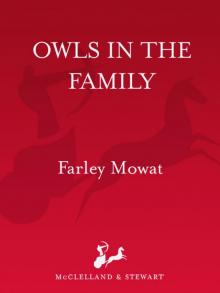 Owls in the Family
Owls in the Family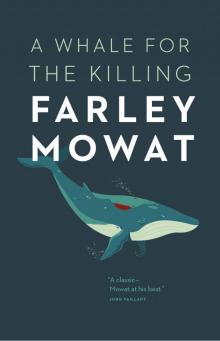 A Whale for the Killing
A Whale for the Killing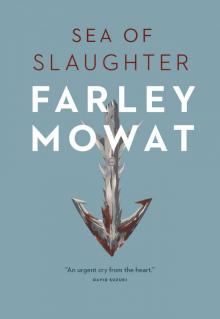 Sea of Slaughter
Sea of Slaughter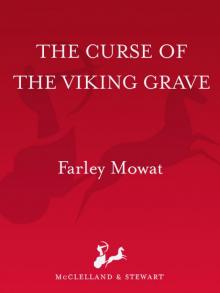 The Curse of the Viking Grave
The Curse of the Viking Grave The Boat Who Wouldn't Float
The Boat Who Wouldn't Float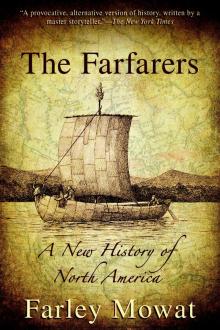 The Farfarers: Before the Norse
The Farfarers: Before the Norse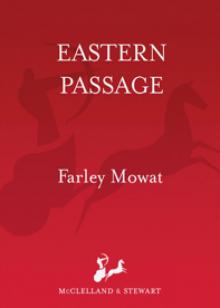 Memoir
Memoir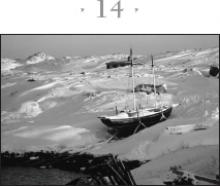 Bay of Spirits: A Love Story
Bay of Spirits: A Love Story The Black Joke
The Black Joke Sibir: My Discovery of Siberia
Sibir: My Discovery of Siberia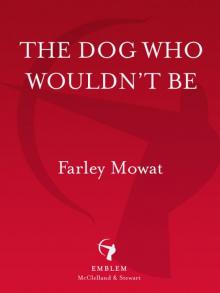 The Dog Who Wouldn't Be
The Dog Who Wouldn't Be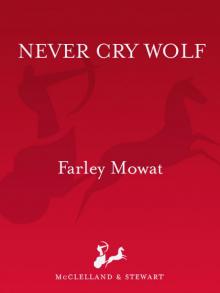 Never Cry Wolf
Never Cry Wolf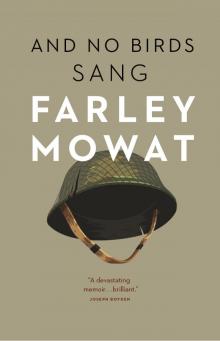 And No Birds Sang
And No Birds Sang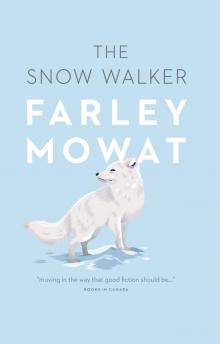 The Snow Walker
The Snow Walker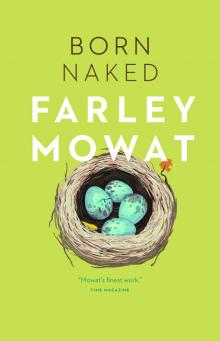 Born Naked: The Early Adventures of the Author of Never Cry Wolf
Born Naked: The Early Adventures of the Author of Never Cry Wolf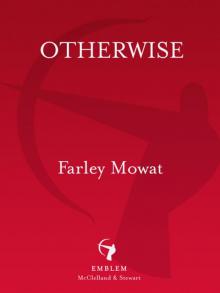 Otherwise
Otherwise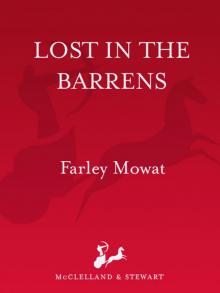 Lost in the Barrens
Lost in the Barrens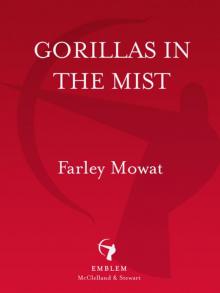 Gorillas in the Mist
Gorillas in the Mist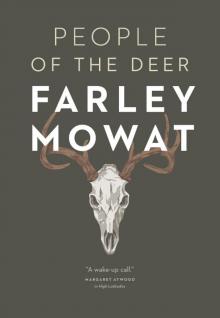 People of the Deer
People of the Deer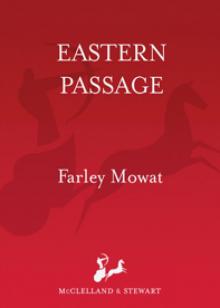 Eastern Passage
Eastern Passage Sibir
Sibir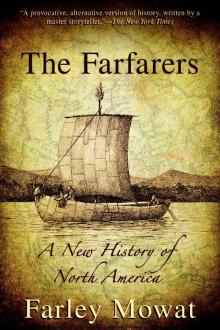 The Farfarers
The Farfarers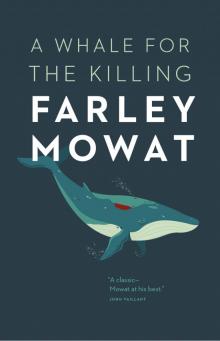 A Whale For The Killing (v5.0)
A Whale For The Killing (v5.0)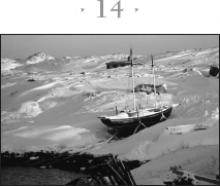 Bay of Spirits
Bay of Spirits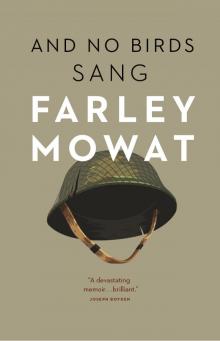 And No Birds Sang (v5.0)
And No Birds Sang (v5.0)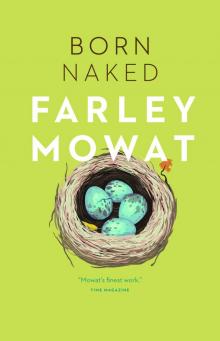 Born Naked
Born Naked